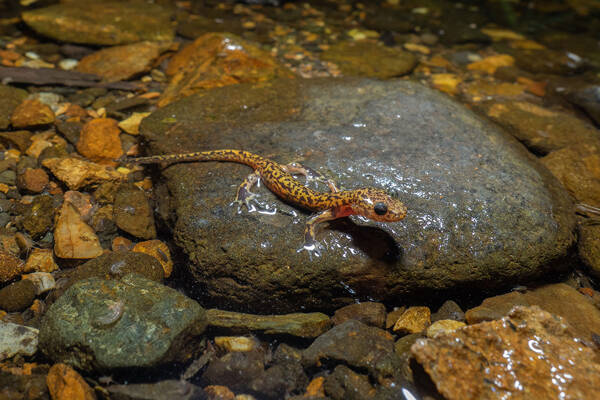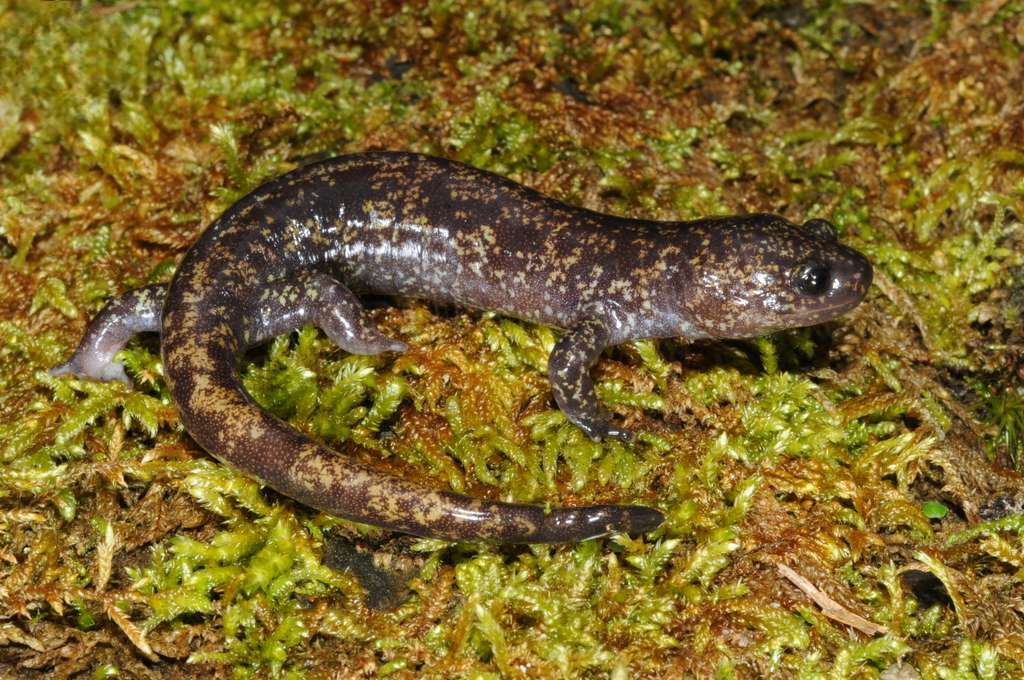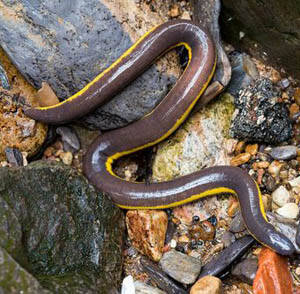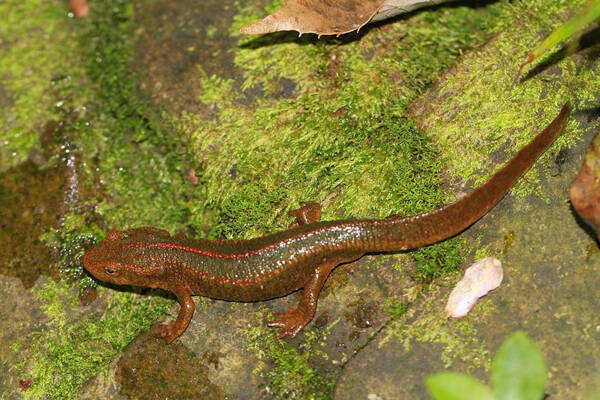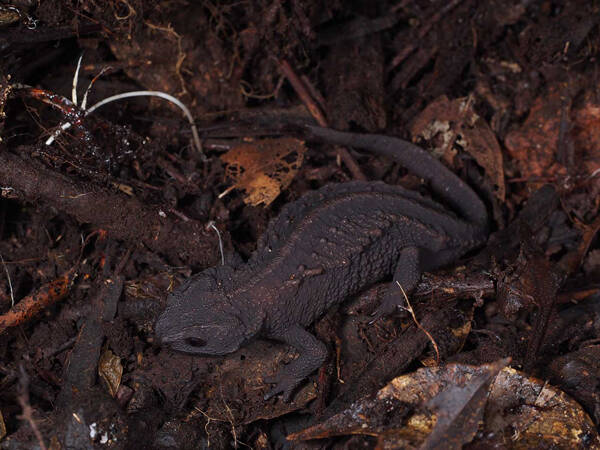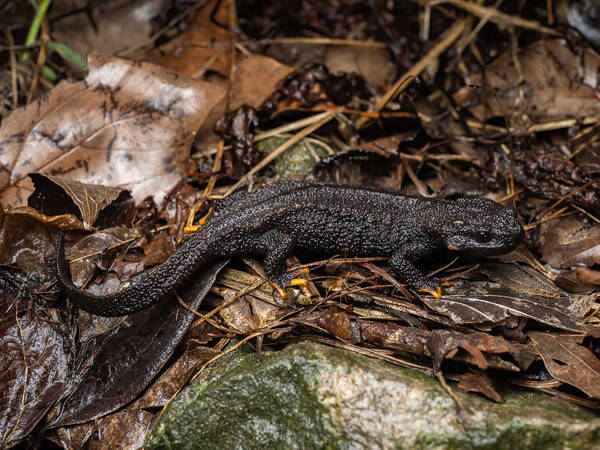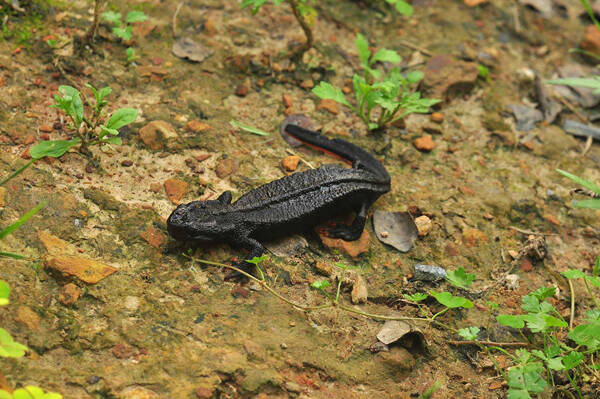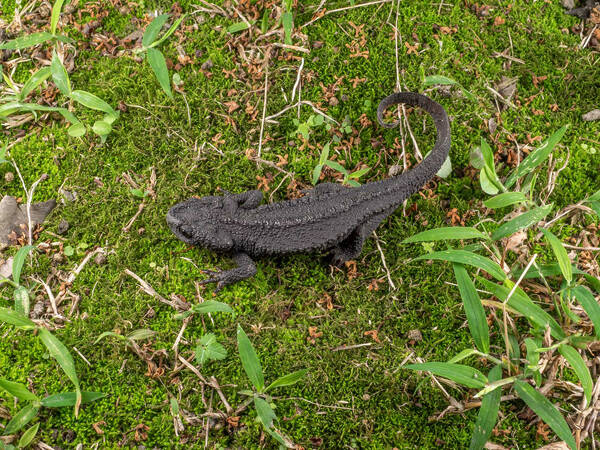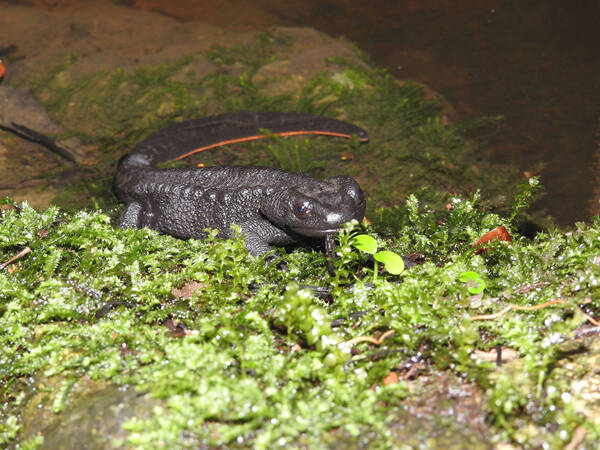Onychodactylus zhangyaping
IUCN
LCBasic Information
Scientific classification
- name:Onychodactylus zhangyaping
- Scientific Name:Onychodactylus zhangyapingi,
- Outline:Urodela
- Family:Caudata Hynomatidae Odontochelys
Vital signs
- length:130.1~179.4 mm
- Weight:
- lifetime:
Feature
The fundamental difference between it and other Hylobatids is that it has black keratin claws on the tips of its fingers and toes, and it does not have the respiratory organ - lungs - that other Hylobatids have, which is rare among amphibians.
Distribution and Habitat
Endemic to China, it is distributed in Linjiang City and Ji'an City in the Yalu River Basin in southern Jilin Province. It is an ancient and rare species.
It lives in coniferous and broad-leaved mixed forests at an altitude of 250-1000m. It often lives in streams or spring ditches and their vicinity where there are overgrown weeds, cool water, and many stones on the bottom and shore.
Appearance
Adult salamanders are slender. The head is relatively flat, the snout is rounded, and there is no lip fold; the premaxillary fontanelle is large and round, and the vomerine tooth row is --shaped, meeting each other on the left and right. The trunk is cylindrical; the tail is significantly longer than the head and body, the front part is cylindrical, and gradually flattens laterally backwards. The back of the body and tail is light purple-yellow or purple-brown, with reticular black-brown spots; the ventral surface is dirty white.
Details
The Jilin clawed salamander (scientific name Onychodactylus zhangyapingi) is an animal of the genus Onychodactylus of the family Hynobiidae in the order Caudata. It has a slender body, smooth skin, and a black and yellow marble pattern on its back. It has an elongated head with a rounded snout, two large and protruding eyes, and strong limbs. In May 2007, the Kunming Institute of Zoology of the Chinese Academy of Sciences and the Jilin Huangnihe National Nature Reserve jointly conducted research and investigation on the species of the Hynobius, and accidentally discovered a strange Hynobius in Heisonggou, Linjiang City, Jilin Province. After laboratory genetic molecular experiments, it was confirmed as a new species of Hynobius in March 2013 and named Jilin clawed salamander.
The Jilin clawed salamander is distributed in the moist and cool mountain stream area in the deciduous broad-leaved mixed forest in the Changbai Mountain area at an altitude of 330 meters to 560 meters. It lives in moist and cool mountain streams, and the water temperature is generally 6℃-14℃. The habitat has a thick layer of pebble riverbeds and moss-covered rocks, which are convenient for it to hide and live. Species distributed in the same area include amphibians such as the Northeast Small Salamander, Northeast Forest Frog, Oriental Bell Toad, and Toad. The Jilin clawed salamander mainly swallows harmful insects such as slugs, snails, Coleoptera, and Orthoptera.
The Jilin clawed salamander has very strict requirements for the environment, and requires the water quality to be mountain spring water. "The sub-adult Jilin clawed salamander has gills, which gradually degenerate as it grows up, and it breathes with its skin, so it has very high requirements for water quality and cannot survive if there is pollution." The clawed salamander has a special living environment, requiring its habitat to be in a stream flowing in the deep mountains, so it has very strict requirements for the ecological environment, and the protection of this specific habitat is particularly important."
Jilin clawed salamander is oviparous, and the appearance and spawning place of its eggs are somewhat special. The breeding season is from early May to early June. It lays its eggs in streams near damp rock walls. The eggs are transparent, spindle-shaped, and capsule-like. One end of the egg is fixed on water plants, dead branches, or hung on submerged rocks like a handle. The "egg capsule" is 18 mm to 40 mm long and 6 mm to 10 mm in diameter. There are 6 to 12 eggs in each "egg capsule". The eggs are slightly oval, light yellow, and the egg diameter is about 3.5 mm × 5 mm. The juveniles complete metamorphosis in the third year.
Listed in the second level of the "List of National Key Protected Wildlife in China".
